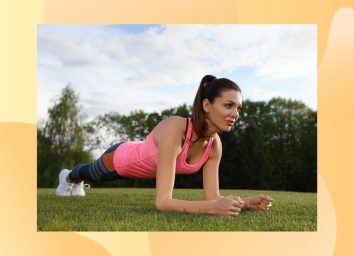How Fit Are You? 5 Full-Body Exercises to Find Out

If you want to test your fitness, full-body exercises are a stellar way to do so. Movements that engage your entire body fire up multiple muscle groups while providing an excellent assessment of various fitness components, such as coordination, strength, and endurance. That's why we consulted with an expert who shares the five best full-body exercises to test your fitness.
To give you an idea, total-body exercises like squats or deadlifts require substantial force generation from various muscle groups. These exercises reveal how well your muscles can dynamically handle and control loads.
"[In addition,] exercises such as kettlebell swings or high-rep squat challenge your muscular and cardiovascular endurance. They test your ability to sustain effort over time without significant loss of form," explains Caleb Kinney-Woods, personal training leader at Life Time Westminster. He adds, "Movements like squats or pull-ups require a full range of motion in joints (e.g., hips, shoulders, and knees). These exercises highlight areas of tightness or restricted movement that might limit performance."
Let's dive into the best full-body exercises to test your fitness, according to Kinney-Woods.
The Exercises
Squats
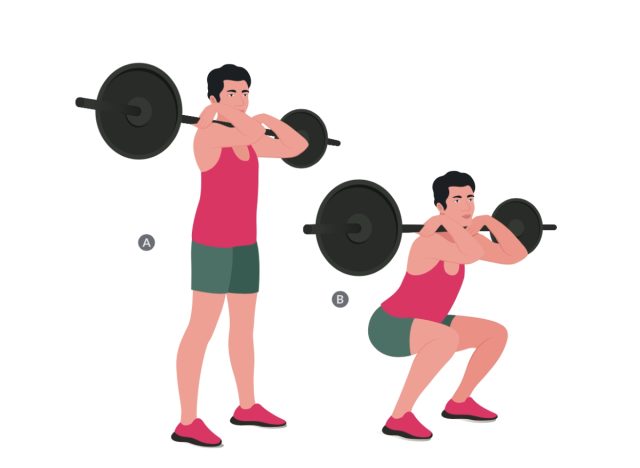
"We all should exercise how we move," says Kinney-Woods. "We sit and stand daily; it is a primal function that almost everyone uses. In short, [the squat is] a foundational movement that contributes to strength, stability, and mobility, making them crucial for maintaining healthy, efficient movement throughout life."
How To Do a Barbell Squat:
- Position a barbell at chest level on a squat rack.
- Rest the barbell on your upper traps (high bar) or rear delts (low bar), based on your personal preference.
- Stand under the barbell and take hold of it with your hands just outside shoulder-width.
- Make sure the barbell sits comfortably in your rack position of choice.
- Stand tall to lift the bar off the rack.
- Place your feet shoulder-distance apart with your toes pointed out a bit.
- Press your hips back and bend your knees to squat.
- Descend until your thighs are parallel to the floor.
- Press through the base of your feet to rise back up.
Deadlifts
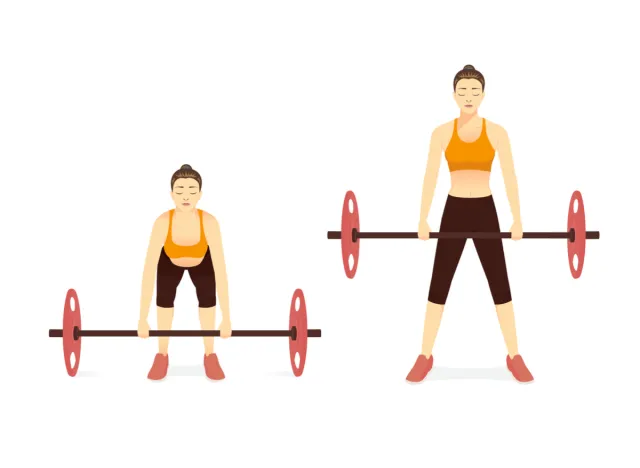
"The deadlift is a full-body exercise that challenges and strengthens muscles in the lower body, core, and upper body, making it one of the most effective compound movements for overall strength and muscle development," Kinney-Woods explains. "The deadlift is considered an ideal functional movement because it closely mimics the natural, everyday action of picking up objects from the ground, a movement we perform regularly in daily life."
How To Do a Barbell Deadlift:
- Stand tall with your feet shoulder-width apart and your shins close to the barbell (which should be on the ground).
- Hinge at the hips to grab the barbell with both hands, just outside knee-width.
- Maintain a tall chest and engaged core.
- Push through your heels to rise up and lift the barbell, keeping it close to your body as you do so.
- Completely extend your knees and hips at the top of the movement.
- Press your hips back and bend your knees to lower the barbell.
Dumbbell Clean and Press
"The clean and press is an effective full-body movement utilizing both pull and press movement patterns," says Kinney-Woods. "It engages different muscle groups from the ground up and can help achieve a true compound movement. The dumbbell clean and press is a bit more technical than the first two movements, but an ideal full-body exercise that can really help you gauge your overall fitness level from a strength standpoint, as well as an aerobic capacity standpoint."
How To Do a Dumbbell Clean and Press:
- Stand tall with your feet shoulder-distance apart and a set of dumbbells positioned on the ground before you.
- Bend your knees and hinge at the hips to grab the dumbbells.
- Drive through your legs and extend your hips in an explosive motion.
- Shrug your shoulders and pull the dumbbells up toward your body, flipping them to shoulder height.
- Dip your knees a bit, then drive up to press the weights overhead, locking out both arms.
- Lower the dumbbells to shoulder level and then back to the ground, using control.
Kettlebell Swings
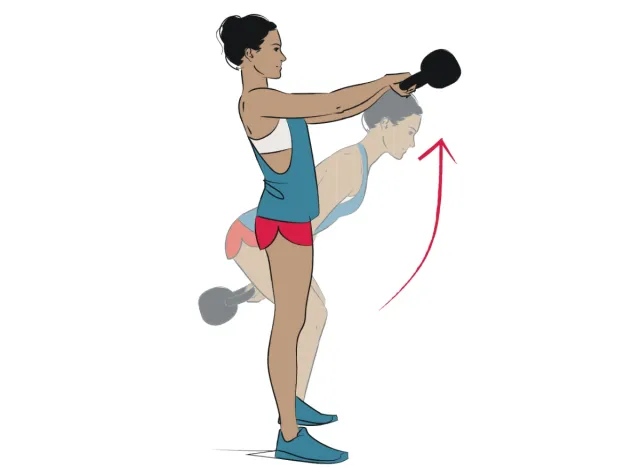
"Many of us sit way too much; it's never a bad idea to get up from that chair and get those hips swinging," Kinney-Woods tells us. "The kettlebell swing is an ideal full-body exercise because it can gauge a multitude of fitness levels, including strength, endurance, power, and explosiveness. The ability to change the variation or type of swing will allow you to use a similar muscle pattern but activate a different muscle each time, the kettlebell swing opens up so many avenues in fitness depending on your personal goals."
How To Do Kettlebell Swings:
- Begin in a hinged position with your hips pressed back and feet fully planted on the floor.
- The kettlebell should be positioned in front of you so you can grab it from the hinged position.
- Bring the kettlebell to a hiked position and swing it up to chest height.
- Use control to flow the kettlebell back through your legs.
Pull-Up or Inverted Row
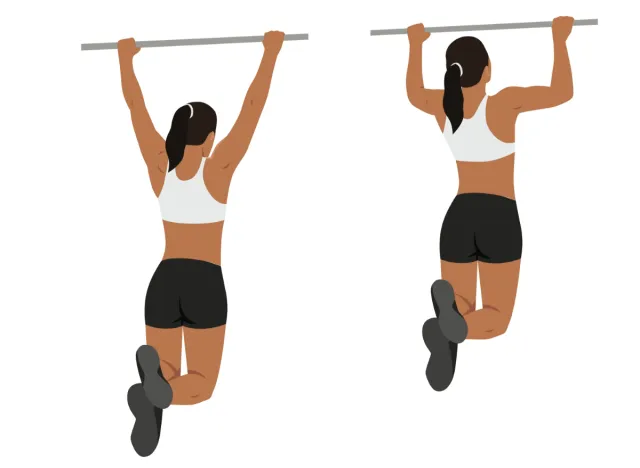
"The pull-up or inverted row tests upper-body pulling strength and shoulder stability," Kinney-Woods explains. "This movement is ideal for evaluating back and grip strength as well as upper-body endurance. Another great movement for beginners and advanced lifters alike, it can be utilized for many different fitness programs depending on the person's goals."
How To Do a Pull-Up:
- Hand onto the pull-up bar with your palms facing away from you, just outside shoulder-width.
- Activate your core and retract your shoulder blades.
- Drive both elbows down as you pull your chest toward the bar.
- Use control as you lower and your arms are completely extended.



